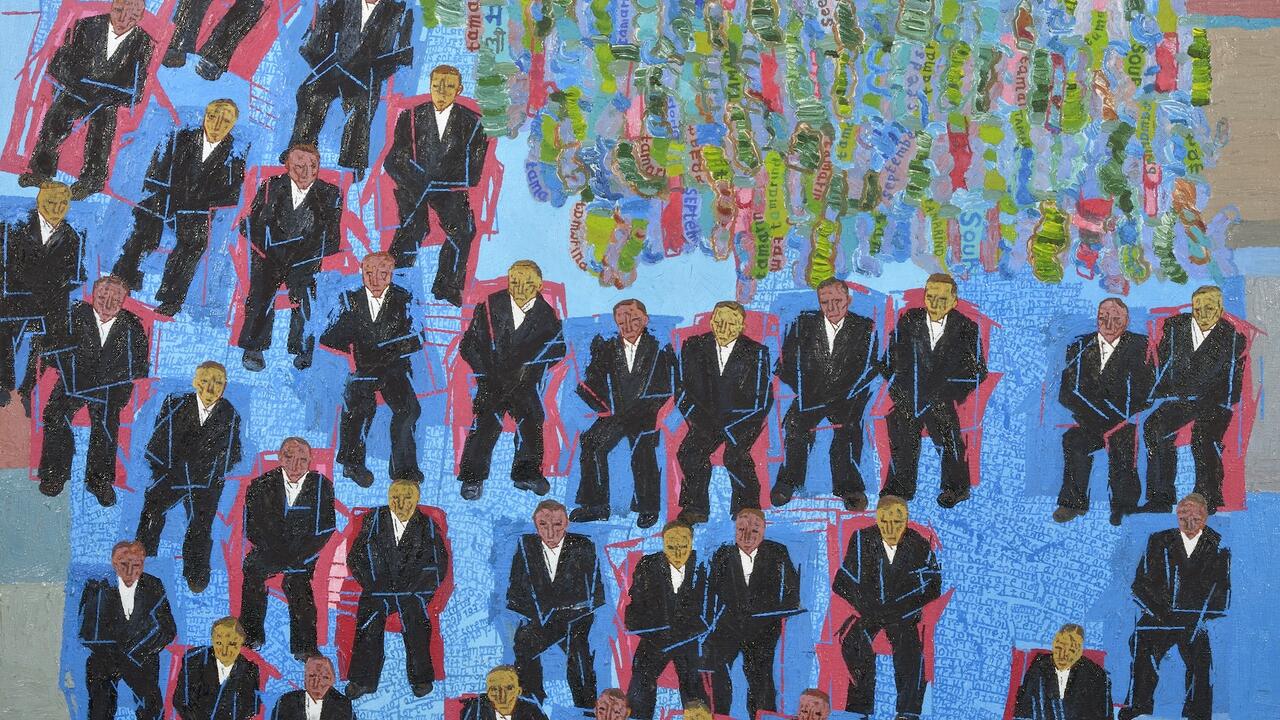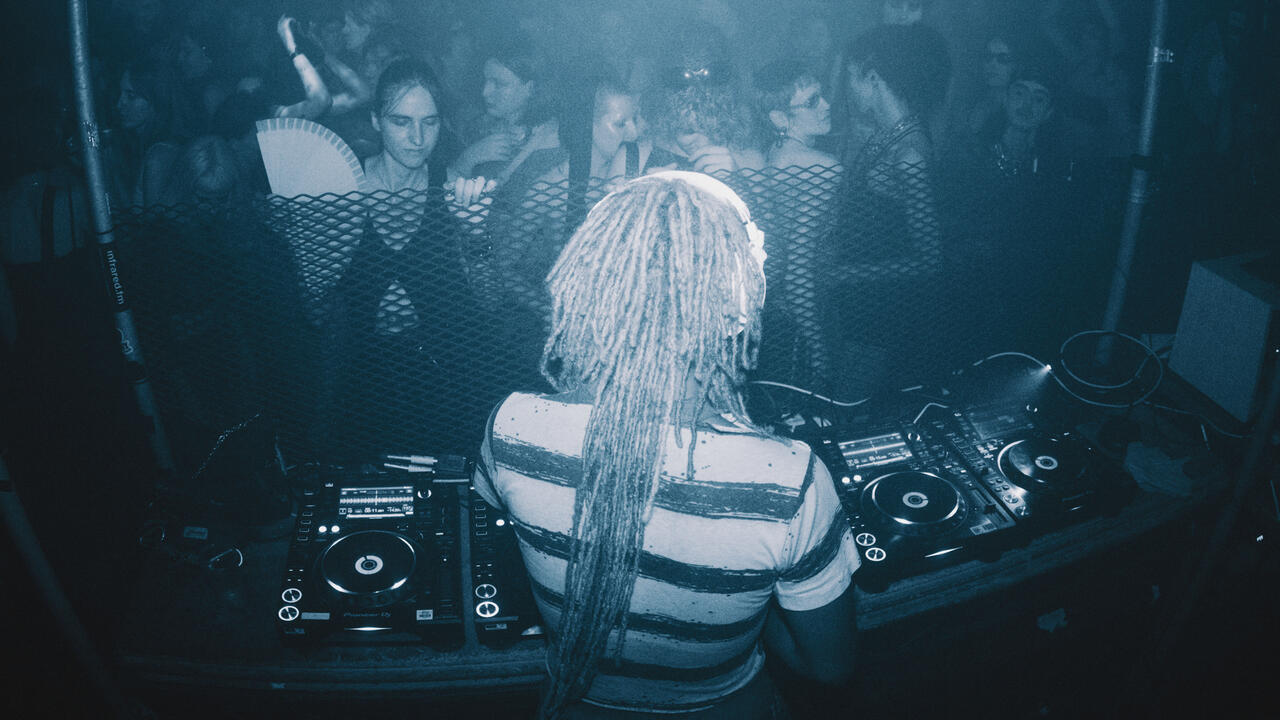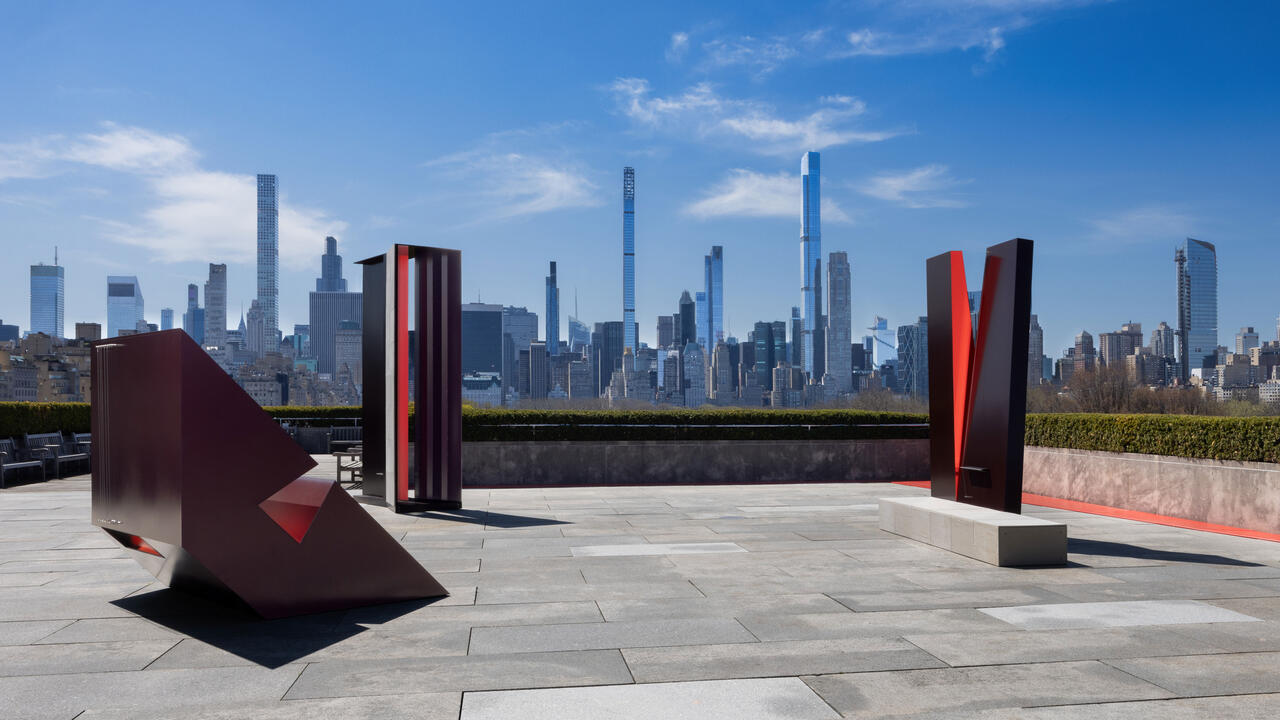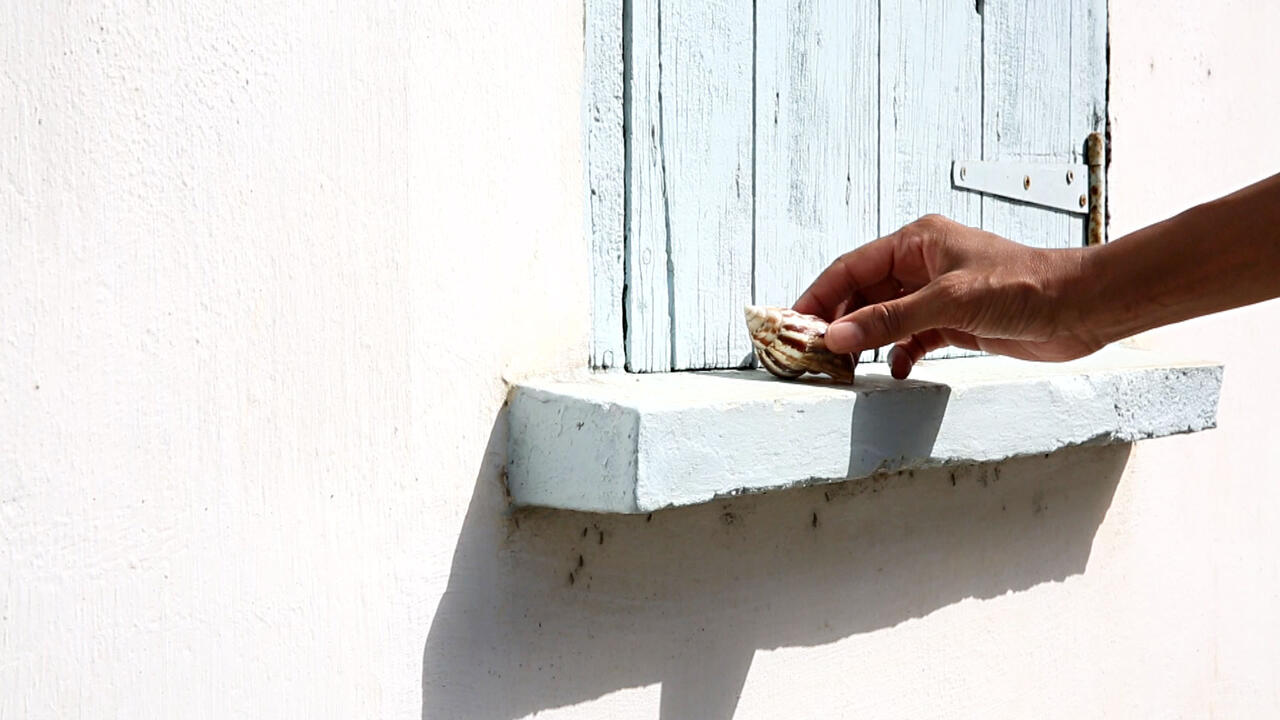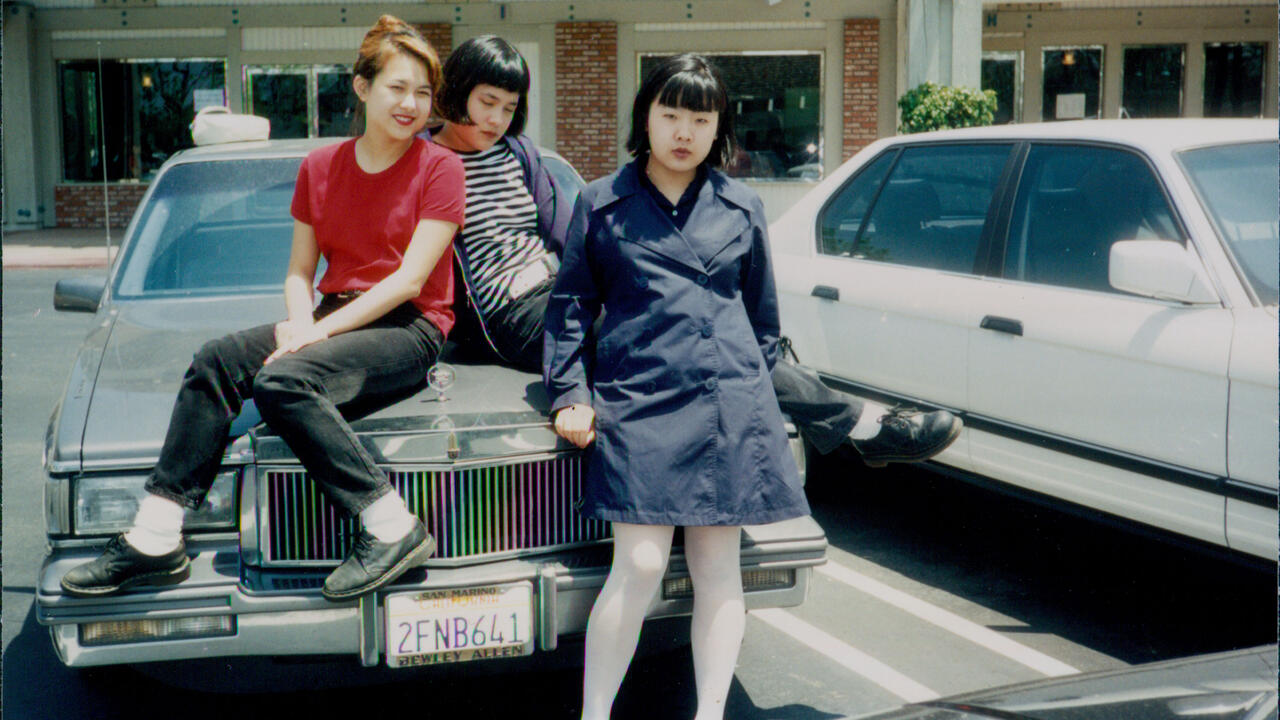Sound Control
Samson Young's multidisciplinary work confronts the ways in which sound can both transcend borders and enforce them
Samson Young's multidisciplinary work confronts the ways in which sound can both transcend borders and enforce them

In a dim corner of the Kunsthalle Düsseldorf, next to the gentlemen’s toilets, I’m listening intently with one of the gallery attendants, who is convinced that there are hidden speakers somewhere. In these pockets of uncurated institutional space, birdsong keeps trilling, with no indication as to where it’s coming from. For Samson Young, the artist whose exhibition ‘A Dark Theme Keeps Me Here, I’ll Make a Broken Music’ opened here in December 2016, birdsong is but one weapon in a compositional arsenal that deploys sounds and objects within a dense web of historical reference to tell myriad stories.

Often, these stories relate to borders – between things, people, places – and the profusion of perspectives they engender. For an artist who is purposefully multi-disciplinary – Young has a PhD, and is still active, in classical composition – he also has a fascination with the simple binary of borderlines. His work plays across political and aesthetic divisions, teasing our understanding of what lies on each side and pulling apart conventions. ‘Stop telling me to stop dichotomizing the East and the West,’ he writes in his text-cum-manifesto ‘Lest I Forget Who I Am To’. ‘I am not done yet. Stop delegitimizing my site of resistance.’1
The geopolitics of borders haunt the colonial histories of Young’s native Hong Kong, which he will represent at this year’s Venice Biennale. In the project Pastoral Music (But It Is Entirely Hollow) (2014 ongoing), Young sings Cantonese nursery rhymes along the Gin Drinkers Line (old British military defences that failed to secure the island against the Japanese during World War II), his haunting, faltering voice resonant in the concrete bunkers. Dripping with a melancholy that conjures not only the specific failure of this military operation but a more global shrug of resignation at the immutability of colonization, the voice possesses a knowing quality that perhaps speaks to the island’s ongoing struggle for self-determination.
For his 2016 multimedia walk, So You Are Old By the Time You Reach the Island, participants revisited the sites of Hong Kong’s 2014 umbrella movement protests in the Admiralty district. Listening through headphones, they partook in an ambulatory, fictionalized spy narrative recalling both Hong Kong’s cold war espionage days and the more recent political upheavals. Young appeared at the climax of the piece, standing on a high walkway above the audience, singing a slow love song to each participant over their mobile phones.

Depictions of the military and the oppression of peoples play lightly through Young’s work, criss-crossed by multiple, interlocking narratives. In Canon (2016), again positioned at a distance from the audience, a performer wearing a 1979 Hong Kong colonial police uniform plays along to a tape of prerecorded birdsong with a bird whistle. The sound is projected through a long-range acoustic device (or LRAD) – a non-lethal sonic weapon used, variously, to scare pigeons on private estates and disperse protestors engaged in acts of civil disobedience; the calls are those of birds in distress. The spectacle is at once authoritarian and performative, insinuating parallel infrastructures of violence and entertainment. The audience is surrounded by the paraphernalia of the 1979 Vietnamese refugee crisis, when a cargo vessel carrying 2,700 refugees arrived on Hong Kong’s shores and its passengers were refused entry. We sit on a custom-made bench bearing the name of the ship, Skyluck. A tiny fountain pumps condensed milk into a replica water basin – symbols of the subsistence aid the refugees were granted while they waited on board for more than four months – and a murmuring Vietnamese voice is heard faintly from behind a door. In Nocturne (2015), a performer dressed in generic military fatigues sits intently watching a small monitor showing aerial bombardment footage, collated from sources including the Gulf Wars and Daesh bombings. Equipped with the tools of the Foley artist, the performer accurately re-creates the cracks of explosions and whooshes of missile launches on a battery of percussion equipment and DIY sound effects, all broadcast through a localized FM transmitter. At Kunsthalle Düsseldorf, this work sat on a floor of sand — another military reference, spilling over from Stanley (2014), a piece evoking Hong Kong’s famous tourist beach, and site of a military internment camp. In time, the volume of different histories in Young’s work blurs the specific nuance of any singular conflict or struggle, creating a schmear of abstracted violence, but one denatured and emasculated through the artist’s sonic and visual translations.
While his work transcends the categorization of sound art, Young pays acute attention to the detail and timbre of sounds both individually and in concert. As the bombs drop on their anonymous targets in Nocturne, the audience is encouraged to encounter the work by wandering through the space with an FM radio, the compression and distortion of the signal turning the Foley sounds into a dislocated, uncanny sonic depiction of war. The birdsong of Canon, while emanating from a hyperdirectional speaker, bounce and ricochet off the walls of the gallery and insinuate themselves into odd corners of the building. (The attendant’s search was fruitless: there were no extra speakers.)
In a series of earlier works, ‘Muted Situations’ (2014), Young purposefully mutes a string quartet and a choir, drawing attention to the physicality and human awkwardness of the performers. Turning the volume up on the lip smacks, page turns and shuffles is perhaps an attempt to address a flawed ideal of transnational music, which would supersede musical archetypes. When a Hong Kong string quartet performs, in near-silence, the music of Joseph Haydn, where and when is our cultural focus?
When a Hong Kong string quartet performs, in near-silence, the music of Joseph Haydn, where and when is our cultural focus?
In the realm of classical music, Young finds another boundary to confront. A globalized industry that fetishizes the output of 300 years of Western art music is riddled with contradictions in the context of somewhere such as Hong Kong. In his series ‘To Fanon’ (2016–ongoing), the artist has vandalized his own early scores, partially overlaying them with images of birds, military figures, drawings and collage, as well as the pasted covers of books by Jean Baudrillard and Paul Virilio. As with much of Young’s work, these appear as a stratification of his thought processes, like geological time revealing itself in a desert mesa.
The anti-colonialist Frantz Fanon, to whom these pieces are addressed, noted in 1959: ‘It is the colonialists who become the defenders of the native style.’2 And it is in Young’s quiet-yet-determined addressing of the cultural identity politics of sound art that Fanon resonates most strongly. Young’s exhibition ‘Orchestrations’ – presented by Para Site at Connecting Spaces, Hong Kong, in 2016 – dealt with the contradictions of the oriental composer, of the self-orientalizing of his peers and of the power structures inherent in musical forms. In ‘Lest I Forget Who I Am To’, Young writes: ‘Debunking the “East meets West” binary involves not only a destabilization of the essentialized concept of the East but, also, an equally rigorous interrogation of the essentialized concept of the West. We must begin by confronting the very language with which we describe the auditory and the act of composition.’3 At times, it seems he is railing against a musical system wherein the inherent infrastructures mimic autocratic regimes: the classical composer is all-powerful and orchestral hierarchies are basically feudal. However, Young’s work shows a fondness for both the tradition and the practice. There may be an element of institutional critique to his work, but Young is also exploring his own identity as a composer: an identity that the founders of the tradition he practises never imagined.
Alongside his composition and installations, Young has notably produced a prolific stream of works on paper, transcribing sound. Recalling in form both the colourful textured graphic scores of Anthony Braxton and the draughtsmanship of Cornelius Cardew, in function they are more akin to the sound drawings of Trisha Donnelly or Max Neuhaus. These are not scores to be read or maps to re-create a sonic journey; they are documents that evoke the auditory through the visual. If Young’s representations of military action in Pastoral Music equate standard musical notation with war strategies, ‘Landschaft’ (Landscape, 2015–ongoing) – his series of transcriptions of environmental soundscapes from Kenya to Poland – communicates through a pictorial language that is unsteady, with symbols shifting from one work to the next. A vibrant watercolour splash, a neatly annotated bass clef, a striated line for a trundling suitcase: instantly attractive, these diagrams successfully transmute intangible audio into visual commodity, while appearing to erode the tyranny of the composer through a process of ‘automatic writing’, democratically revealing the hidden sound worlds within.

To write of Young’s work, then, is to wrestle with this extant tension between his dual artist-composer persona – two worlds alienated from each other through education and economy. (He is currently composing a piece for the Hong Kong Sinfonietta while preparing his Venice Biennale show.) Even as his gallery production veers away from concrete references to the tools of a composer’s art (the accretion of scores and notation), we sense that his work is composed with an ear for the contrapuntal nature of how pieces relate to each other. At Kunsthalle Düsseldorf, the interplay of birdsong, aerial bombardment Foley, muted string quartet, sung lullaby and the nearby cathedral bells reveals a precise calculation.
The French composer Olivier Messiaen once wrote: ‘I give birdsongs to those who dwell in cities and have never heard them, make rhythms for those who know only military marches or jazz, and paint colours for those who see none.’4 For Young, the birds that hide in dim gallery corners, occupy his musical scores and emanate from military hardware are more than just signifiers of freedom: they are transgressive beasts, circling above borders, calling to us to look up as we, too, step across lines.
1) Samson Young, ‘Lest I Forget Who I Am To’, undated (http://bit.ly/2jbEozj)
2) Frantz Fanon, ‘Wretched of the Earth’, speech to the Congress of Black African Writers, 1959
3) Samson Young, ‘Lest I Forget Who I Am To’, op. cit.
4) Independent, 9 December 1988
Samson Young is a composer and artist. In 2016, he had solo shows at Experimenter, Kolkata, India; Para Site, Hong Kong; and Team Gallery, New York, USA. His exhibition ‘A Dark Theme Keeps Me Here, I’ll Make a Broken Music’ is at Kunsthalle Düsseldorf, Germany, until 3 March. Other upcoming projects this year include his representation of Hong Kong at the 57th Venice Biennale, Italy, an experimental radio piece for Documenta 14, and a commission for Manchester International Festival, UK.
Main image: Samson Young and Leung Chi Cheung, To Fanon (Leung Chi Cheung), 2016, pastel, pencil, highlighter, stamp, watercolour and conductor's original rehearsal marings on paper, 30 x 42 cm. Courtesy: the artist and Para Site, Hong Kong









